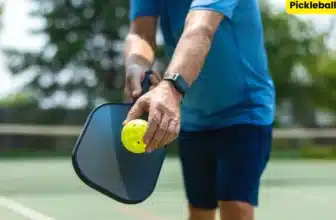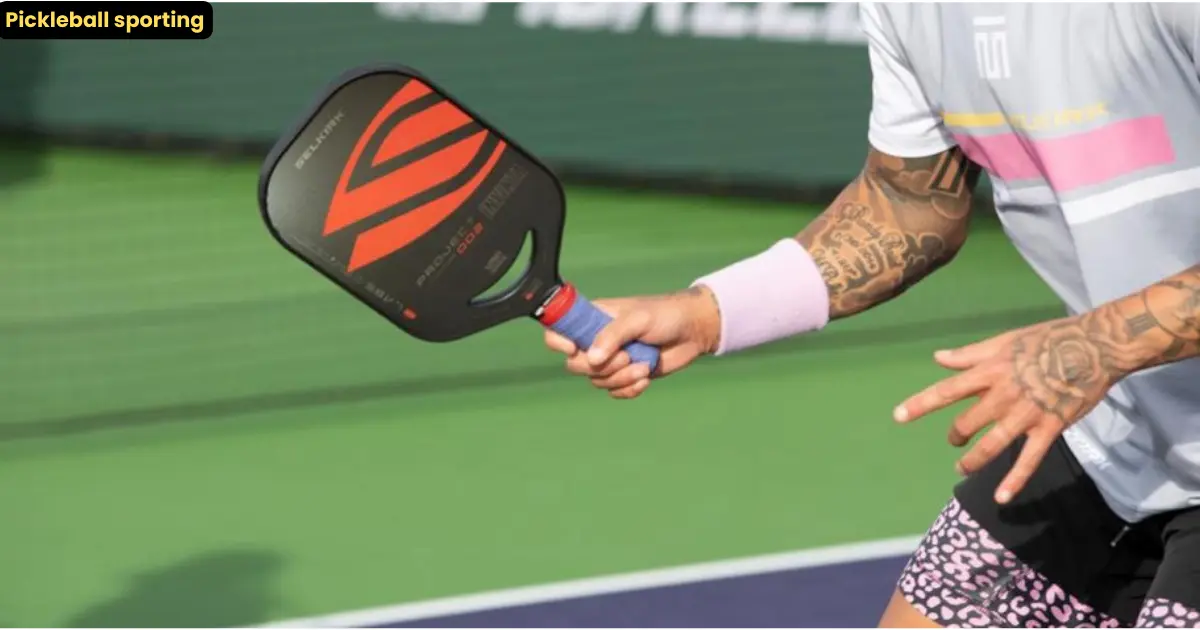
Improving your performance on the pickleball court is as simple as learning the correct grip for your paddle. A correct grip will help you hit the ball strictly and intensely, improving your control and accuracy. It’s the base for using various techniques and shots to help your pickleball succeed.
You have found the ideal site if you want to improve your pickleball performance. This article will guide you through the key factors of pickleball grips. It breaks down the three most often used approaches, together with their advantages and drawbacks.
We will also offer advice on changing your grip to fit your playing style and holding your paddle tightly. Remember that improper holding of even the best paddle cannot create wonders. So, let’s start right away!
The Three Types of Paddles Grips
Before mastering the continental grip, you will have to learn about the types of paddle grips we have in pickleball. Picture your paddle grips as the secret sauce to your game. Here are the three classic paddle grips in pickleball:
The Continental Grip
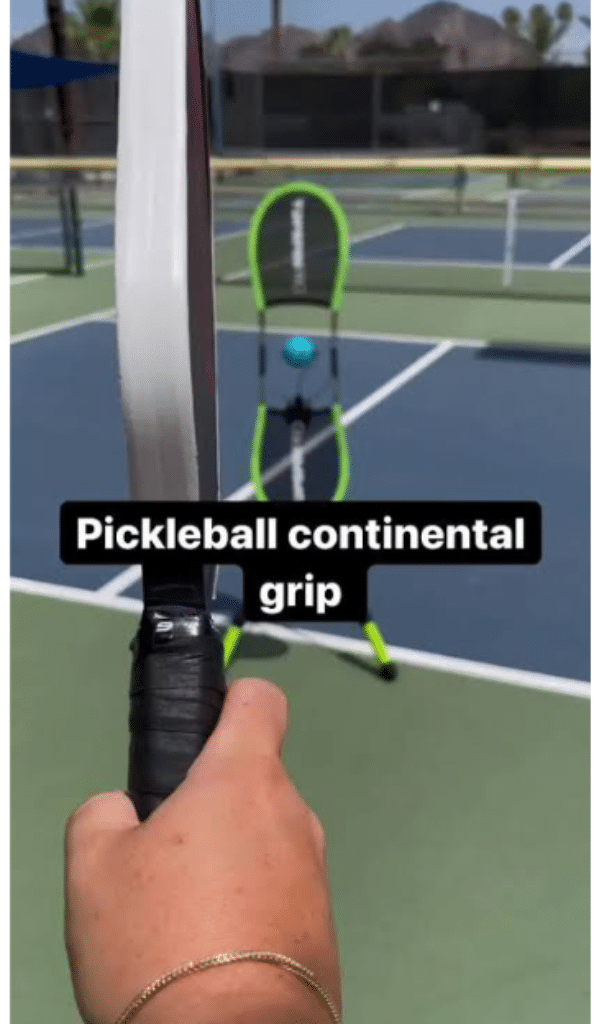
Continental grip is the most common pickleball grip style people like to master to up their pickleball game. It’s also known as the hammer grip. Why so? Because you hold the paddle like a hammer hitting a nail.
Here’s how you hold a paddle for continental grip:
- Place the index finger knuckle just right of the flat bevel.
- Creates a V between thumb and index finger.
- Lefties, adjust knuckle to the left-side bevel.
The Eastern Grip
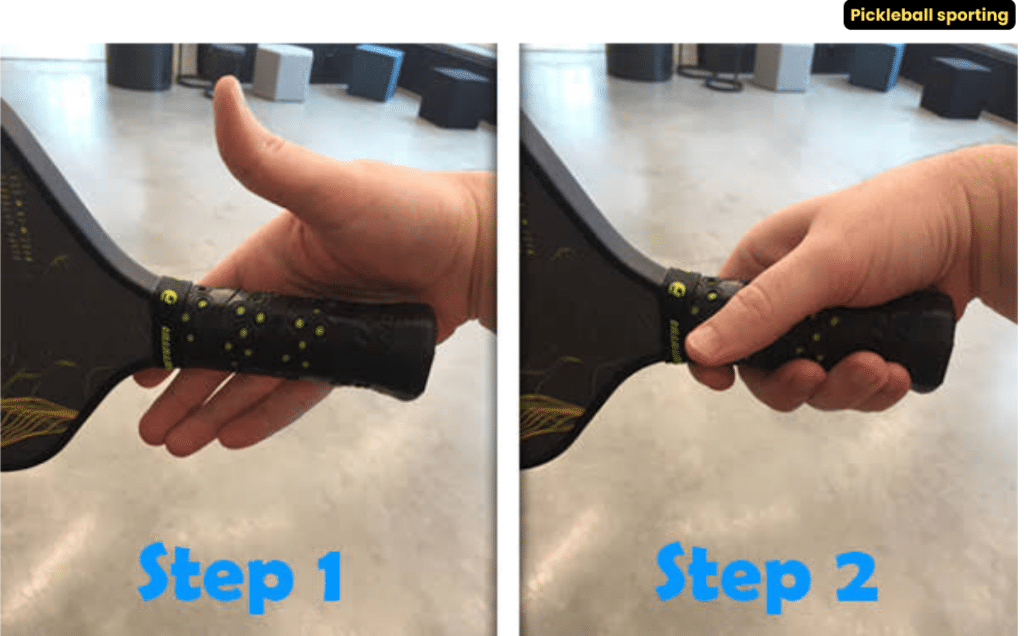
The Eastern grip, which is also sometimes called the handshake grip is another hold that pickleball players like. The name comes from how you hold the paddle, which looks like shaking hands.
Here’s how you can master the pickleball eastern grip:
- Extend your hand in a handshake position.
- Wrap your fingers around the paddle handle, mimicking a handshake.
- Position the knuckle of your index finger on the 2nd bevel to the right of the top flat bevel.
V Placement:
- Ensure the V between your thumb and index finger rests on the first bevel to the right of the top.
- Left-handed players, adapt by placing your index knuckle on the 2nd bevel to the left of the flat top bevel.
The Western Grip
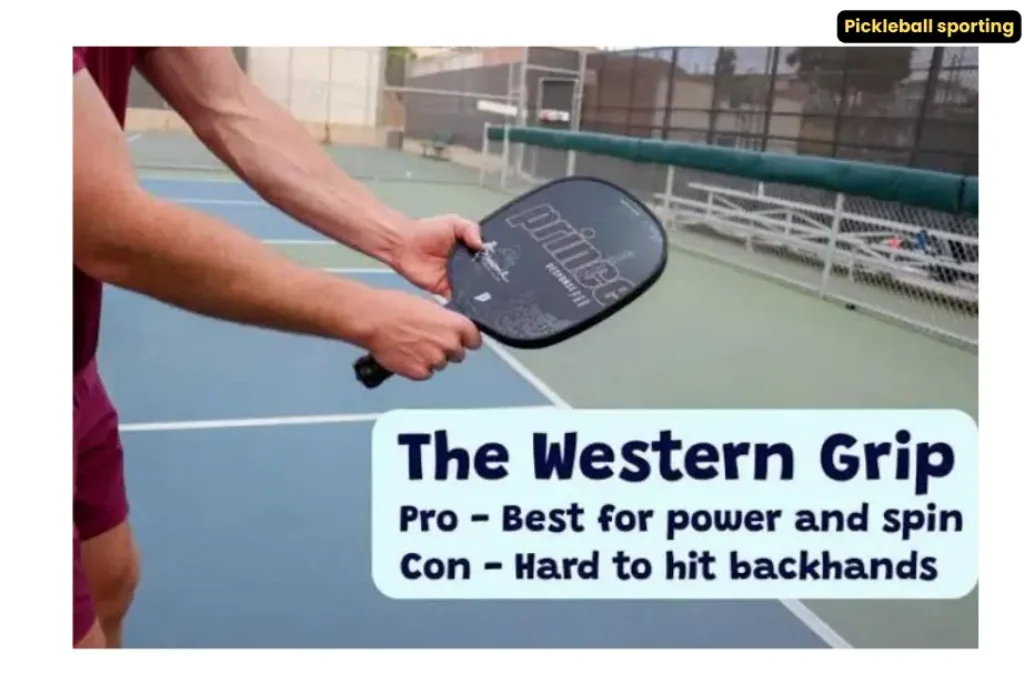
Once you have successfully mastered the Eastern grip, learning the Western grip becomes a breeze.
Adopting the Western Grip:
- Rotate your hand one bevel to the right or clockwise.
- Place your index knuckle on the third bevel to the right of the flat top bevel.
- The V between your index finger and thumb should be on the 2nd bevel to the right of the top flat bevel.
Frying Pan Grip Style:
- Hold the paddle as you would a pan-flipping pancake.
- This style is aptly named the ‘frying pan grip.’
- With the paddle face closed, you should see the back of the paddle when held straight out in front of you.
Continental Grip: Pros and Cons
Pros:
- This grip is in the middle so it can be used in various ways.
- The V on top of your hand makes it easier to hit strong backhands because your hand is in front of the paddle when you hit it.
- It’s great for precise dinks and returns because it gives you control and precision.
- You don’t have to change grips between shots, which makes it easier to play regularly, particularly for beginners.
Cons:
- This one may need to be stronger on the forehand than other grips.
- Players of all skill levels like the Continental grip because it is balanced and can be used in various ways.
When Does the Continental Grip Work?
Let’s discuss why you might want to switch from a continental grip to something else.
There are a couple of reasons for this:
1. Easier for Driving Shots:
- These shots require hitting the ball flat and with significant power. It is a move without spin.
- An eastern grip makes it more natural to face the paddle forward, which is crucial for driving the ball forcefully.
- Using a continental grip for such shots would require adjusting the paddle face during contact, which would result in a less efficient and slower swing.
2. Easier for Topspin:
- Top spin shots involve making the ball spin forward. It adds a curve to your shots.
- The eastern grip’s natural forward-facing position is advantageous for generating topspin compared to the more open continental grip.
- Attempting topspin shots with a continental grip would require adjustments that make the swing less efficient.
Does the Grip Matter?
Absolutely! Pickleball grips do matter, and it’s not just about style. Think of it like choosing the right shoes for a game – the grip can affect your performance. The right grip helps you control the paddle better, making those swift moves and powerful shots way easier. It is just like having the perfect playlist for a workout. It enhances the whole experience.
So, whether you prefer a cushioned feel or a firmer grip, finding what suits you is like unlocking a cheat code for your pickleball game. It’s not just about winning; it’s about enjoying the game even more!
Bottom Line
This is why knowing the basics of every pickleball grip is essential, no matter which one you choose to learn. Know their advantages and disadvantages, how they differ from other grips, and which will suit your play style. Moreover, knowing when every grip works best can help you to play much better.
Keep in mind that being able to change your grip will give you more confidence and skill when you face difficulties. Learning these grips can help you to improve your pickleball performance and increase your court success.
FAQs
What is a continental grip in pickleball?
It is a way of holding the paddle with the base knuckle of your index finger on the edge, providing versatility for various shots.
What is the proper grip for pickleball?
The continental grip is commonly recommended for better control, especially for beginners.
How do you hold a pickleball paddle continental grip?
Place the base knuckle of your index finger on the edge of the paddle and ensure a relaxed grip for improved maneuverability.
Can you use a Western grip in pickleball?
It’s not common; continental grip is usually recommended for better play, as it allows for more effective volleys and control.
What is the difference between eastern pickleball grip and continental pickleball grip?
In the continental grip, the base knuckle is on the edge, whereas for the eastern grip, it is more towards the top for forehand shots, influencing the paddle angle during play. When comparing the two, understanding the complexities of the eastern vs continental grip can help refine your pickleball technique.
What is the eastern forehand grip pickleball?
The eastern forehand grip in pickleball involves placing the base knuckle of your index finger more towards the top of the paddle, facilitating controlled forehand shots.



